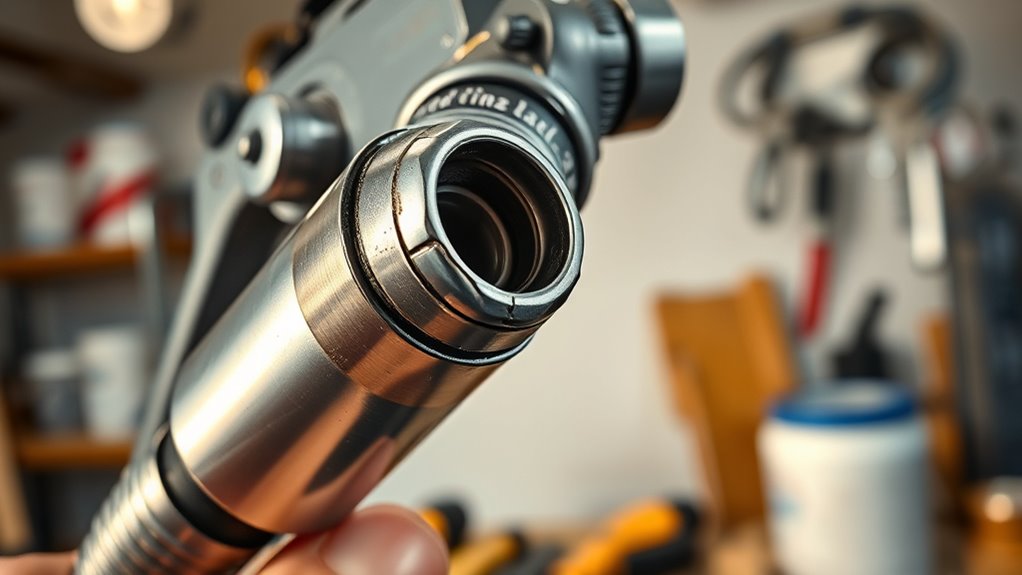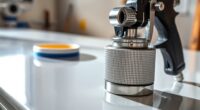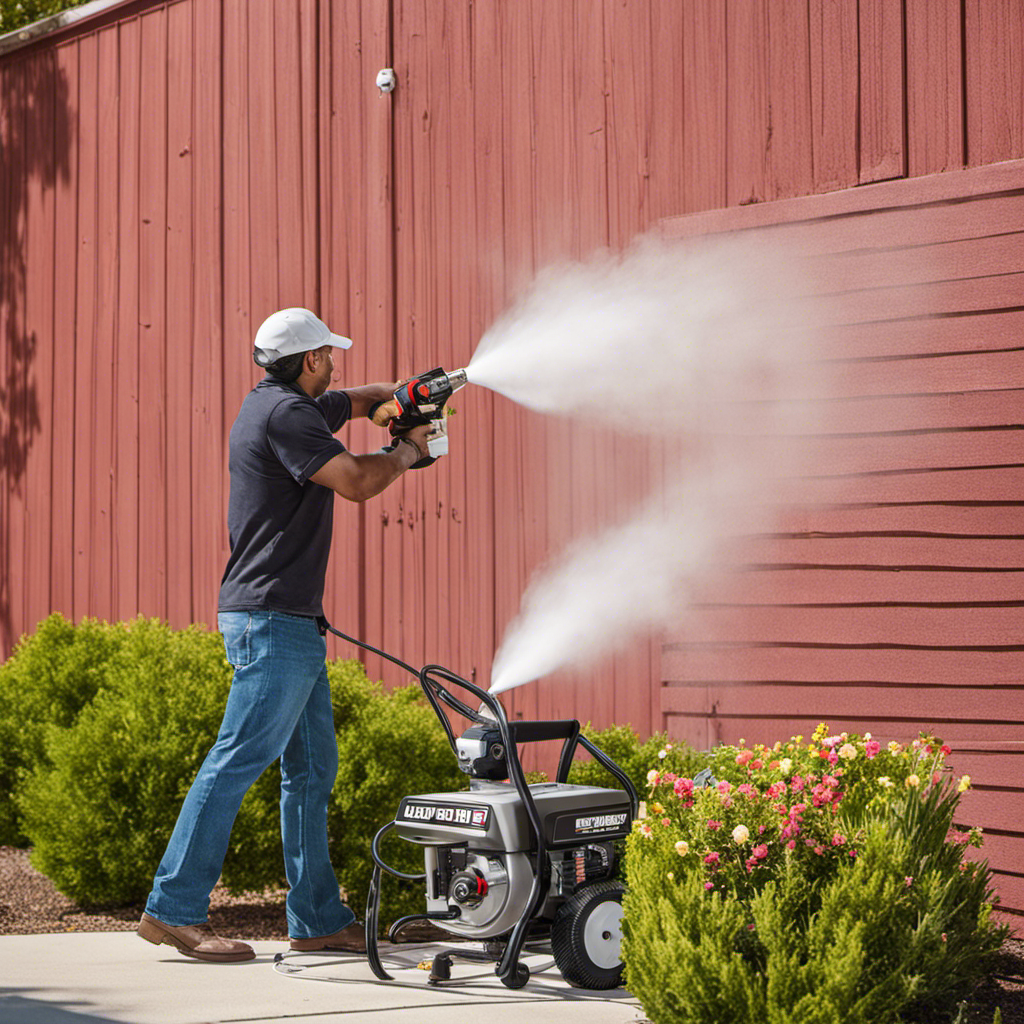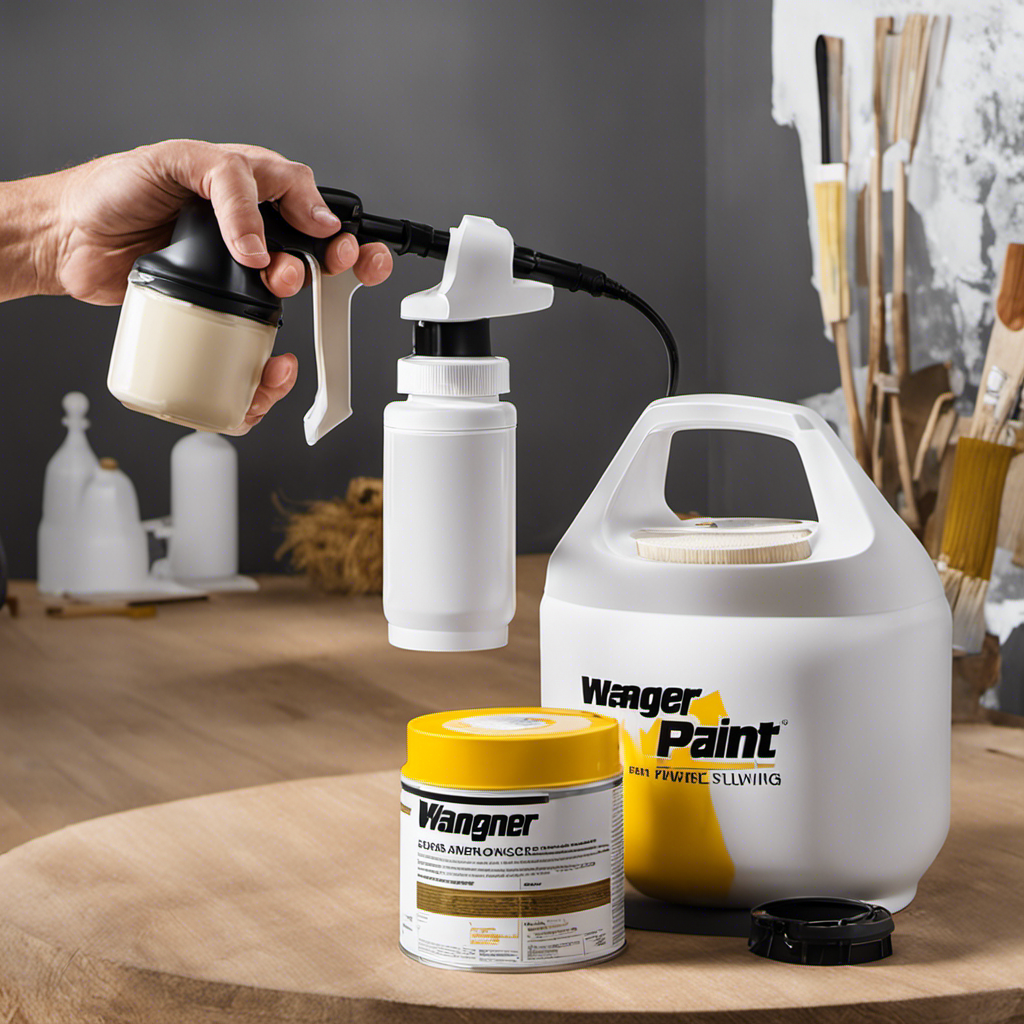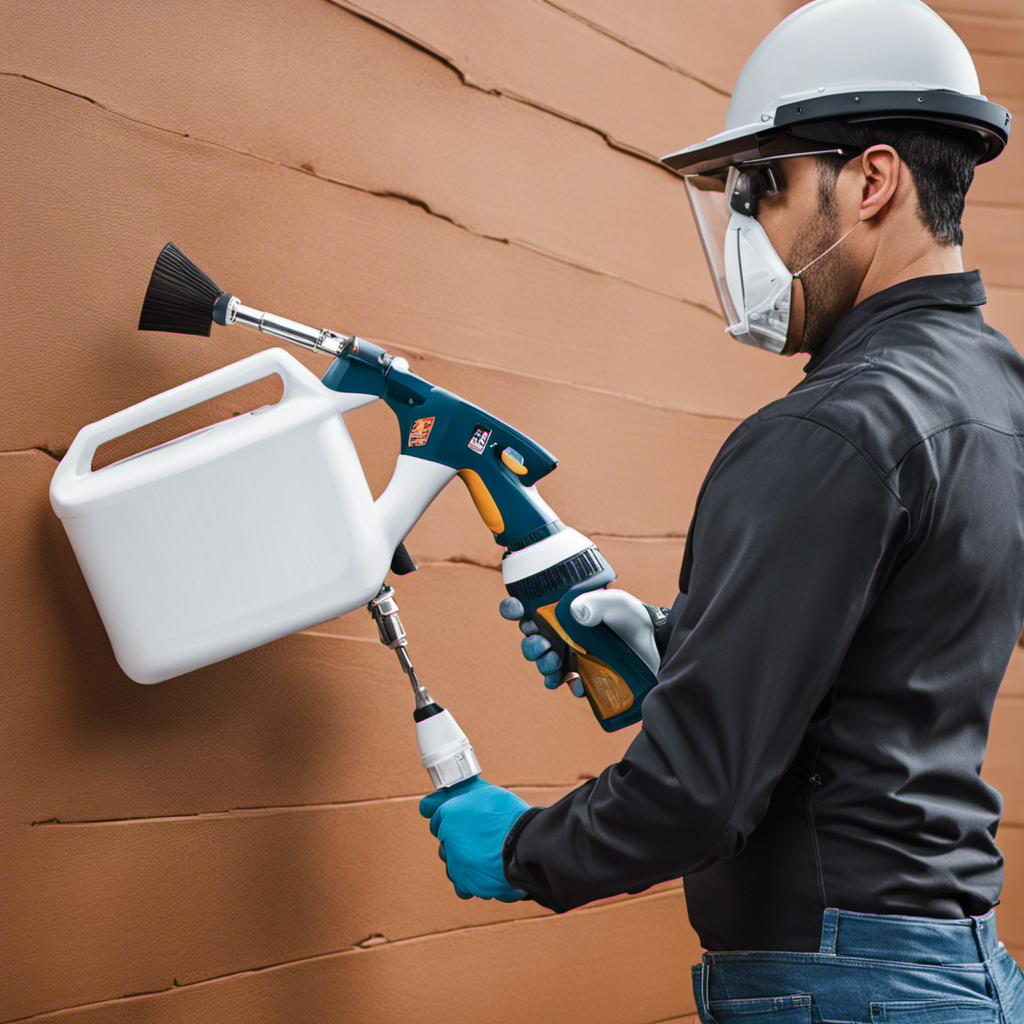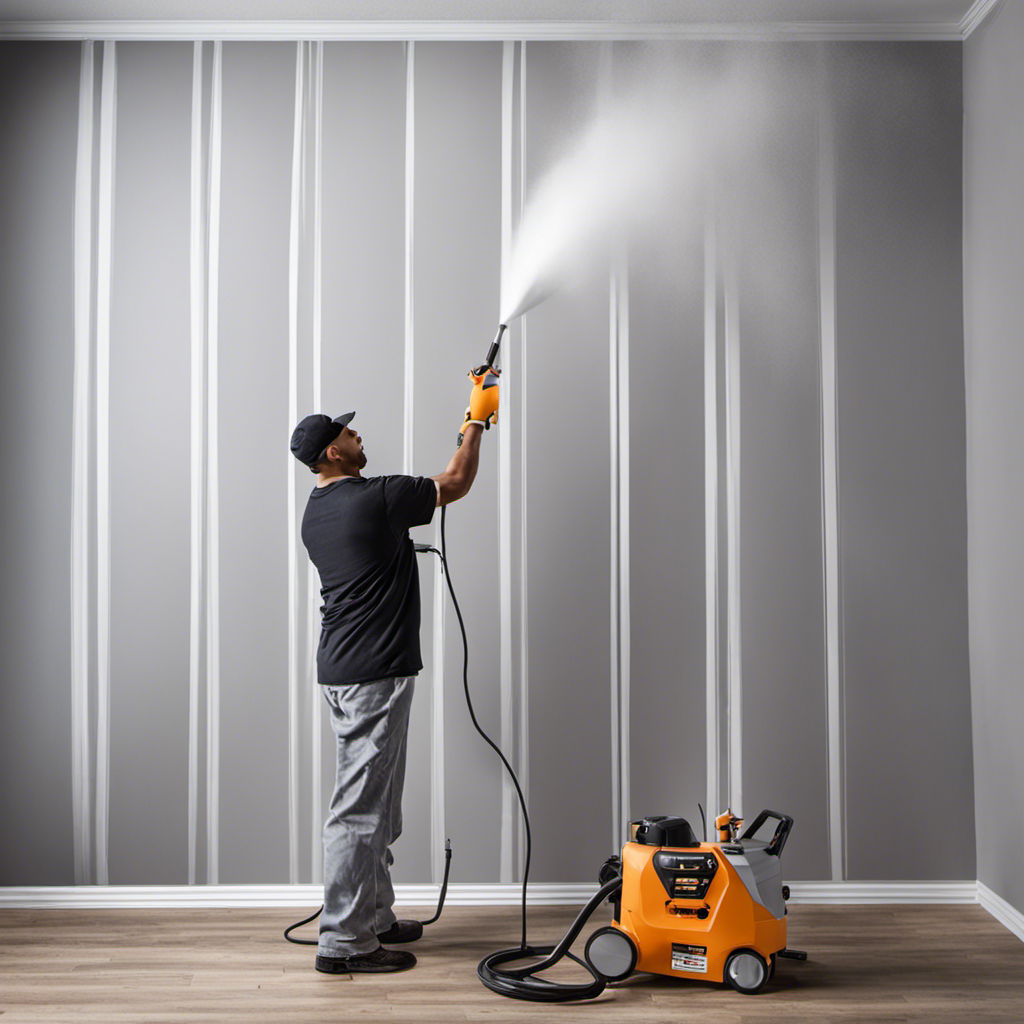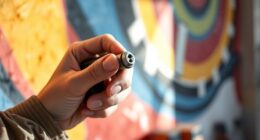If your paint sprayer won’t spray at all, start by checking all connections to guarantee they’re secure and the device is switched on. Clear any clogs in the nozzle or filters, and make sure the paint supply isn’t empty or dried out. Also, look for air trapped in the system by priming the sprayer again and adjusting the pressure. Troubleshooting these common issues can help restore proper spray flow and keep your project on track.
Key Takeaways
- Confirm the sprayer is properly connected, switched on, and the power source is functioning.
- Check for clogs or dried paint in the nozzle, filters, and inlet screens; clean or replace as needed.
- Ensure the paint container is filled, securely attached, and the system is properly primed to remove air pockets.
- Inspect hoses and spray tips for damage, leaks, or blockages that could prevent paint flow.
- Verify pressure settings and adjust the regulator to ensure adequate pressure for consistent spraying.
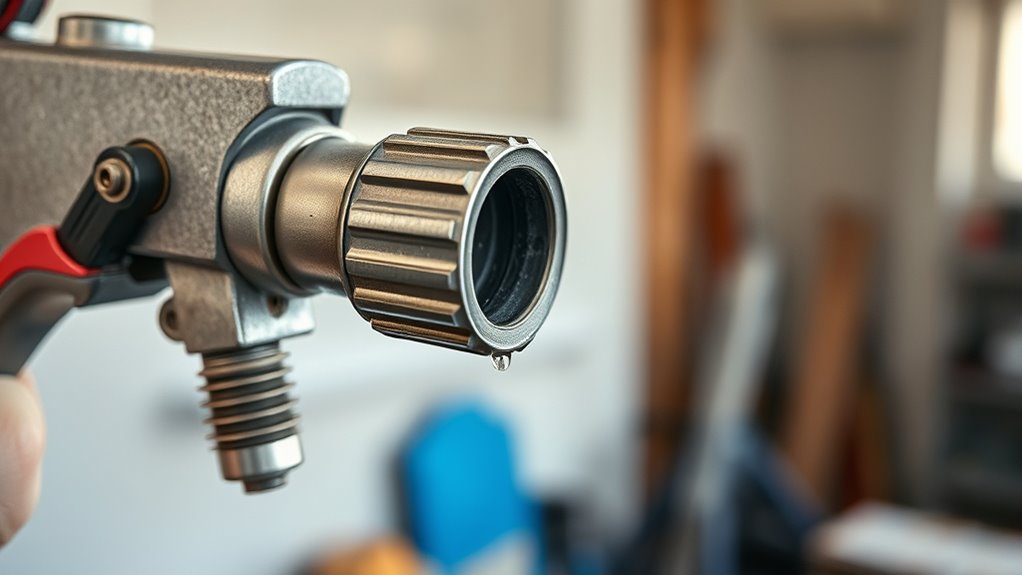
If your paint sprayer isn’t spraying, it can be frustrating and hinder your project’s progress. Many times, this issue stems from airless sprayer issues or paint flow problems that prevent paint from reaching the nozzle. To fix this, you need to identify the root cause quickly and efficiently.
A non-spraying paint sprayer often signals flow issues or air blockages needing quick troubleshooting.
First, check if the sprayer is properly connected and powered on. Sometimes, the problem is as simple as a loose hose or a switched-off switch. If everything appears to be in order, look at the paint supply. Make sure the paint container is filled and securely attached. If the container is empty or not sealed correctly, no paint will flow through the system.
Next, examine the paint itself. Thick, old, or dried-out paint can clog the system, especially in the nozzle or inlet screens. If you notice clogs, clean the nozzle thoroughly and flush the system with a compatible cleaning solution. For airless sprayers, issues often originate in the fluid inlet or the pump. Check for any blockages or buildup that could be restricting paint flow. Regular maintenance, like cleaning filters and screens, can prevent these problems from occurring.
Another common culprit is air trapped in the system. Air pockets can interrupt the flow of paint, especially if the sprayer is new or has been sitting idle. To clear airlock issues, try priming the sprayer again or increasing the pressure slightly to push the air out. Sometimes, loosening the nozzle slightly can help release trapped air. If the pump isn’t creating enough pressure, inspect the pressure regulator and ensure it’s set correctly. Low pressure can cause inconsistent spray patterns or no spray at all.
If you’re using an airless sprayer and notice inconsistent spray patterns or no paint coming out, it could be due to a worn or damaged tip. Replacing the spray tip often resolves paint flow problems. Also, check the hose for leaks or cracks, as air leaks can reduce pressure and prevent paint from flowing smoothly.
In some cases, the problem isn’t with the equipment but with the technique. Moving the spray gun too quickly or not maintaining consistent pressure can cause paint to sputter or stop. Practice steady, even strokes to ensure continuous paint flow.
Frequently Asked Questions
Can I Use a Paint Sprayer for Staining Wood?
Yes, you can use a paint sprayer for wood staining, but choose a sprayer suited for thin stains to get even coverage. Make certain to clean and maintain your sprayer properly, especially with regular sprayer maintenance, to prevent clogs and ensure smooth application. Using the right settings and nozzle will help you achieve professional-looking results, making your wood staining project efficient and mess-free.
How Often Should I Clean My Paint Sprayer?
You should clean your paint sprayer after every use to maintain peak performance. Follow a regular cleaning schedule, especially if you switch colors or finishes, to prevent clogs and buildup. Use proper maintenance tips like flushing the system with the right solvents and inspecting parts for wear. Consistent cleaning ensures your sprayer stays in top shape, reduces future issues, and extends its lifespan.
Is It Safe to Spray Paint Indoors?
Spraying paint indoors can be safe if you prioritize indoor ventilation and fumes safety. Always make certain your workspace has proper airflow, like opening windows and using fans. Wear protective gear such as masks and goggles to minimize inhaling fumes. Avoid spraying in confined spaces without ventilation, as fumes can accumulate quickly. Following these precautions helps protect your health while achieving great results indoors.
What Type of Paint Is Compatible With My Sprayer?
You might think all paints work with your sprayer, but that’s not always true. Investigating paint compatibility reveals that different sprayer types require specific paints—airless sprayers handle thicker paints, while HVLP sprayers need thinner coatings. To avoid clogs or poor spray patterns, check your sprayer’s instructions and select compatible paints accordingly. Using the right paint ensures smooth application and prevents damage to your equipment.
Can I Fix a Clogged Nozzle Myself?
Yes, you can fix a clogged nozzle yourself. Start by thoroughly nozzle cleaning; remove the nozzle and soak it in solvent to loosen dried paint. Use a small brush or needle for clog removal, gently clearing any blockages. Avoid forcing paint through, which could damage the nozzle. With patience and proper nozzle cleaning, you’ll restore your sprayer’s spray pattern and get it working smoothly again.
Conclusion
If your paint sprayer refuses to spray, don’t lose hope—you’re not stuck in a paintless purgatory! By checking for clogs, ensuring proper assembly, and maintaining the right pressure, you can revive your sprayer faster than you’d believe. Remember, a tiny blockage can feel like a mountain, but with patience and a little troubleshooting, you’ll be back to transforming surfaces in no time. Your perfect finish is just a few steps away—don’t let a no-spray moment stop you!
Franz came aboard the Paint Sprayer Zone team with a background in both journalism and home renovation. His articulate writing style, combined with a passion for DIY projects, makes him an invaluable asset. Franz has a knack for breaking down technical jargon into easy-to-understand content, ensuring that even the most novice of readers can grasp the complexities of paint sprayers.
